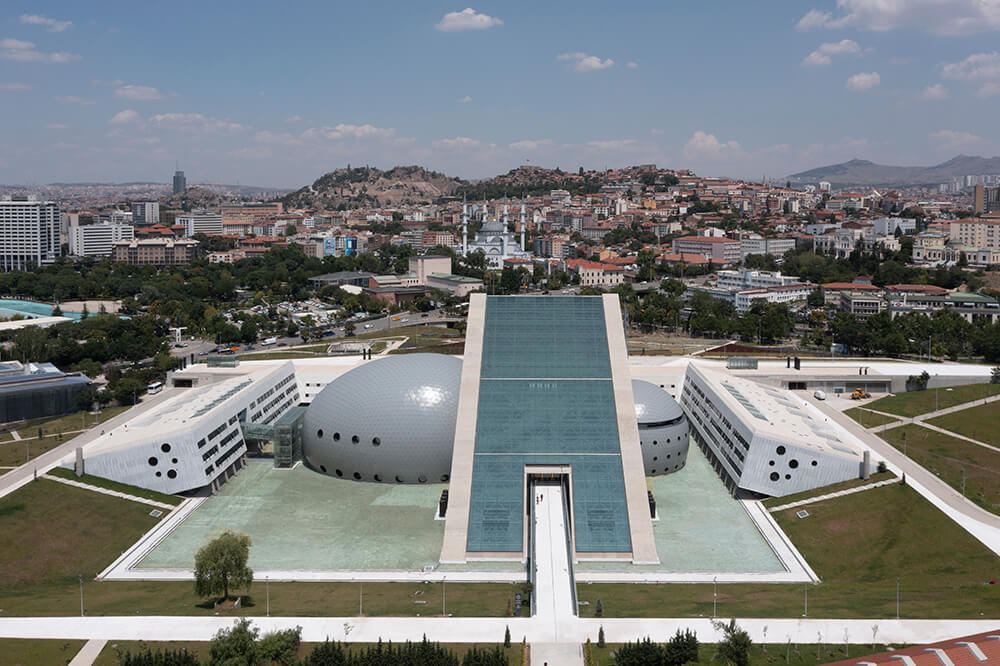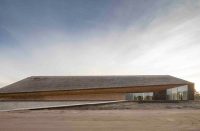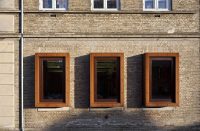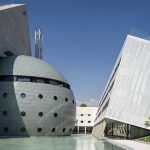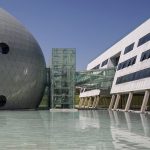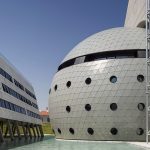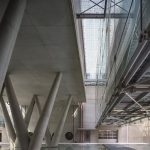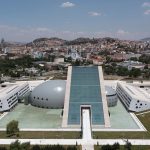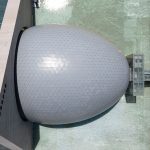Architect(s): Uygur Architects
Address: Anafartalar, Talatpaşa Blv No:38, ANKARA, Turkey
Latitude/Longitude: 39.9333449370481,32.851448133136174
Photographs: Cemal Emden
Ankara has a new landmark with an international appeal; The Presidential Symphony Concert Hall building with its focus on culture aims to prove an asset to both local and global music scene while being the instigator of interaction and exchange among citizens.
The Presidential Symphony Concert Hall lies in the heart of the city, right in the middle of an axis connecting the historic Ankara Castle and Anıtkabir, the Mausoleum of Mustafa Kemal Atatürk (the founder of Turkish Republic). It is embedded in a relatively abandoned urban landscape, which is the only gap looking towards Anıtkabir and the historic Ankara Citadel from Ataturk Boulevard, which functions as the main avenue since the first urban plans of Ankara. The decision was to avoid interrupting the views of both the Citadel and the Mausoleum. The project stood out among other competition entries with two prominent features: One is this subtle symbolism concerning the dialogue of the premodern and modern-republican histories of the city. The design strategy prioritizes vistas of both monuments and establishes the dialogue by being a contemporary cultural destination in between. The second concerns the timeless form and spatial qualities of the complex. According to the jury report, the building reveals a symbolic architecture that will not wear out over time, avoiding a design language that can be valid for a certain period of time.
The configuration of the complex is so designed that the triangular prism foyer establishes the dialogue between Ankara Citadel and Anıtkabir. Thus, a depiction of the “Before and After Republic” is intensified through a cultural house. This foyer is designed as an “urban room” by being transparent and publicly accessible. The colossal egg-shaped dome is designed as the Symphony Orchestra Hall with the capacity of 2000 audience, and the sphere dome is designed as Chamber Orchestra Hall with the capacity of 500 audience are popping out of this vaulted triangular prism foyer. Following the vineyard concept of concert hall, the musicians are placed in the middle, while the audience surrounds the stage, rising up in steeply sloping rows.
The symbolical approach is depicted by the distinct and dynamic Euclidean forms and their poetic compositions. Foyer and the concert halls are located on the lowest level of the site and a reflection pool surrounded them. The pool mirrors the sky, the city and the halls around, reflecting the different weather conditions and redefining the atmosphere every single day. On both sides of this rectangular pool, two identical buildings are positioned diagonally, as if popping out of the earth, enigmatizing and embracing the concert halls. The complex creates a crater lake imprint and otherworldly impact. In these upward-tilted buildings, administrative and educational units and professional studios are placed. Guest’s experience is a clear incentive which eschews a singular roof or facade to convey a sculptural structure composed of seemingly independent forms and the balance of curvilinear and sharp-edged buildings.
Located in the heart of the city, The Presidential Symphony Concert Hall Complex stands as an architectural landmark and can be seen by all because of its significant positioning and striking image. The design was an early statement that heralded the future. Surprising as it may be for the time of its conceptualization, the design remained fresh in its futuristic aesthetic.
Since this project has an unprecedentedly drawn-out story because of disparate priorities of the state, the project has been re-visioned by the architects several times according to the changed regulations (fire regulations, climate regulations, earthquake regulations etc.). Besides, even though the project was started to be drawn by hand at first (because of the starting date) but in this long process of 29 years all new technologies have been involved from simple computer drawing software to parametric technologies. The project had a painful and unsettled construction process, but architects managed to stick to their original concept and update the project details and solutions by the help of new technologies and current construction developments. Thus, the project reveals itself as a layered architectural timeline.
Text description provided by the architects.
Project team: Necati Seren, Güliz Erkan, Metin Cihan Yıldırım, Ayça Tüzmen, Kamer Tomris Çetin, Esra Gömceli, Deniz Karabacak, Oya Caymaz, Bozkurt Yurdaku, Umut Toker, Sandro Capadona, Onur Ergen, Ayhan Abanozcu, Alper Derinboğaz, Gökhan Kınayoğlu, Emre Şavural, Ecren Başbuğ, Ramazan Avcı, Aslı Kaya, Evrim Özlem Kale, Özcan Kaygısız, Eser Köken, Ebru Can, Rabia Uçay, Kemal Yurtgezen, İrem Erdinç, Mustafa Kır, Deniz Uygur
Civil eng. project: Danyal Kubin, Prota Mühendislik
Mechanical eng. project: Bahri Türkmen, Bahri Türkmen Mühendislik
Electr. eng.: Kemal Ovacık, Ovacık Mühendislik
Landscape architects: Can Kubin, Promim
Consultants: Prof. Wolfgang Fasold (FRAUNHOFER INSTITUTS FÜR BAUPHYSİK)
Client: T.C Çevre ve Şehircilik Bakanlığı
Construction area: 62.547m2
Contributed by Uygur Architects

